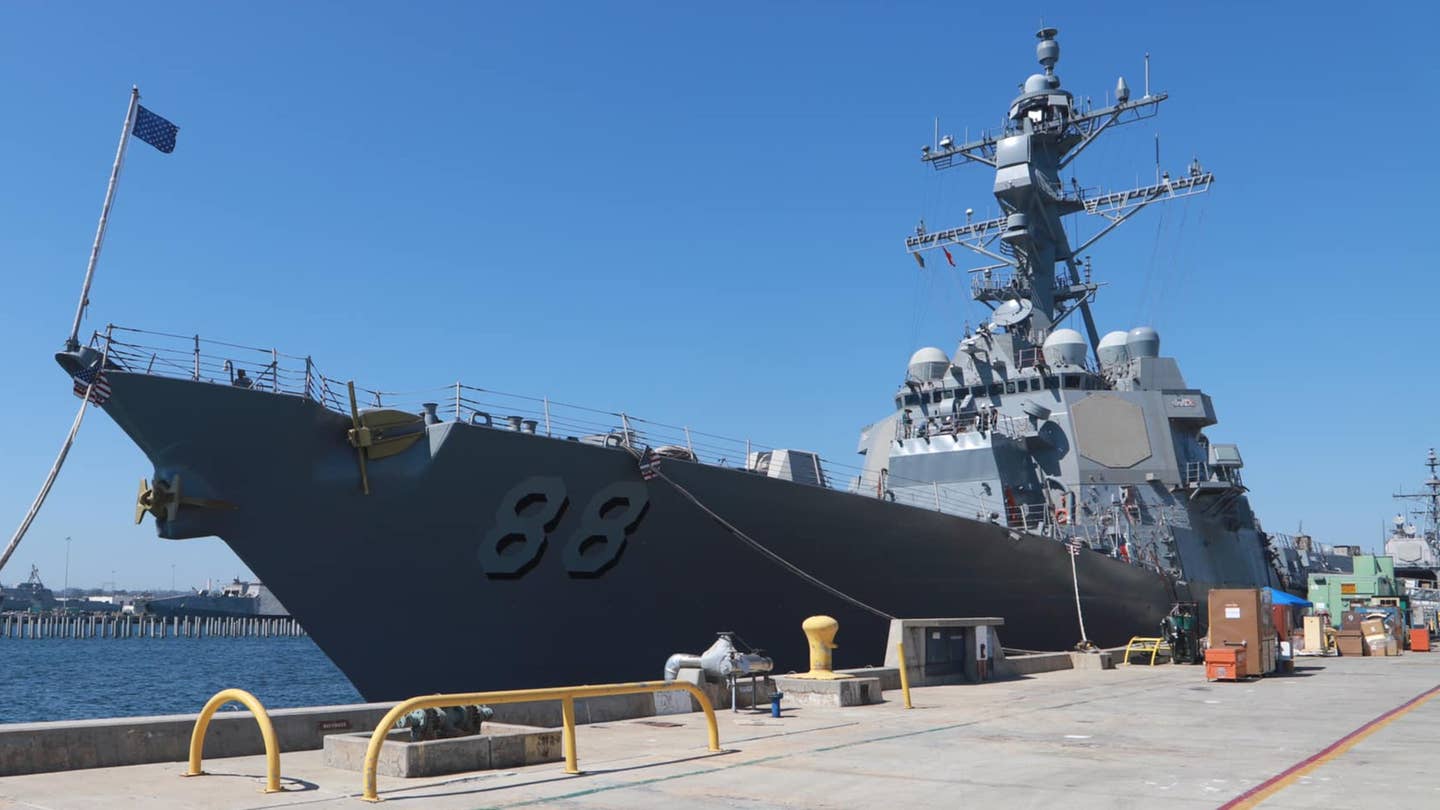Challenged by a numerically superior People’s Liberation Army Navy (PLAN) that is getting bigger every year, the US Navy is all set to manufacture and introduce a next-generation warship with never before seen capabilities.
The Arleigh Burke-class destroyer, the US Navy’s workhorse and a frequent visitor to the South China Sea and Taiwan Strait for Freedom of Navigation Operations, entered production more than 30 years ago.
However, the US Navy is ready to take the giant leap forward. It would equip its ‘future ship’ with laser weapons to shoot down incoming hostile missiles and hypersonic missiles traveling at speeds of up to 3,800 mph to attack the enemy.
The Next-generation warship, named ‘DDG(X),’ is a work in progress.
According to Bath Iron Works’ Director Tom Stevens, the warship provides an opportunity to build something new after a historic production run of the Arleigh Burke destroyer ships, AP reported.
Seventy DDG 51 class ships have been delivered to the Navy, with 19 more on contract and 12 ships in various stages of construction.

Stevens was a teenage welder when the Arleigh Burke-class destroyer entered production. “It will be an impressive destroyer that will launch us into the next generation of ships,” said Stevens.
The Navy faces a growing danger from China, whose numerical superiority grows yearly. Therefore the stakes are high when it comes to replacing the backbone of the fleet.
However, work on the DDG(X) is gathering pace. This summer, General Dynamics Bath Iron Works in Maine and Huntington Ingalls Industries in Mississippi received the initial design contracts for a large surface warship that would eventually replace the Burke destroyers.
The cost of all that military equipment to be outfitted on the futuristic warship will be high. The Congressional Budget Office estimates that the average price of each new ship will be a third higher than the Burke, the most recent of which cost roughly $2.2 billion each.

The Navy wants to procure the first DDG(X) in FY2030. According to a report published by Congress, the Navy’s proposed FY2023 budget requested $195.5 million in research and development funding for the program.
The Navy has sworn that it won’t make the same mistakes with the stealthy Zumwalt-class destroyers, the USS Gerald Ford aircraft carrier, and other recent shipbuilding disasters where it rushed production and stuffed a lot of new technology into ships, causing delays and additional costs.
“Rather than tying the success of DDG(X) to developmental technology, we’re using known, mature technologies on a flexible platform that can be upgraded for decades to come, as the technology of tomorrow is matured and demonstrated,” said Jamie Koehler, a Navy spokesperson.
DDG(X) Next Generation Warship
In January this year, the US Navy revealed its concept for a next-generation destroyer — DDG(X) — a warship capable of deploying hypersonic missiles and laser weapons.
The X in DDG(X) represents an unknown design. However, it has been touted as the largest and most ambitious design for any surface warship the Navy has suggested in over two decades.
According to reports, the new ships will be outfitted with combat systems adapted from the current Flight III Arleigh Burke-class missile destroyers equipped with the Baseline 10 Aegis weapons system and the SPY-6 air search radar.
The proposed destroyer will be characterized by a new hull design, an efficient Integrated Power System, and better endurance. The power supply will be crucial for integrating the laser weaponry that will probably be installed aboard DDG (X).
During a briefing at the Surface Navy Association symposium on January 12, Katherine Connelly, deputy program manager, said, “Capabilities that we’re going to need for the 21st century to continue combating the threat are increased missile capability sensor growth, directed energy weapons, which require a lot of power, increased survivability and increased power availability.”
Up to 600 kilowatts of laser power could theoretically be charged by the new ship, making them robust enough to shoot down enemy-guided missiles. The DDG(X) will also probably be outfitted with a versatile five-inch gun and enormous silos to house the Navy’s newest hypersonic missiles.
It is pertinent to mention that the US Navy has already started integrating laser weapons on the existing DDG-51 destroyers. A laser weapon system was recently installed on the USS Preble, an Arleigh Burke-class destroyer in the US Navy.

The HELIOS laser, short for High-Energy Laser with Integrated Optical Dazzler and Surveillance, is the first laser that will be integrated with Arleigh Burke’s power and cooling systems and the ship’s Aegis Combat System.
As far as hypersonic weapons are concerned, the US Navy diligently pursues Long Range of Hypersonic Weapons. By 2028, according to the US Navy, it would have air-launched, air-breathing hypersonic anti-ship cruise miles in service.
This weapon will be crucial for fending off escalating threats from adversaries like China and Russia.
EurAsian Times had previously reported that the three destroyers of the Zumwalt-class are set to be the first to be armed with long-range hypersonic weapons. Burkes were supposed to be replaced by stealthy Zumwalt-class destroyers, which had electric power, a unique tumblehome hull, and an angular design to reduce radar signature.
The program was ultimately scaled back from 32 to three due to the high cost, but supporters claimed the technological advancements might be helpful for future ships.
The Navy stated that the new destroyers will use a conventional hull, a radar, and a weapon system similar to those currently in use and will use the ship’s electric power plant to energize lasers. Nonetheless, some have labeled the project ‘too aspirational,’ and cost remains a bottleneck.
- Contact the author at sakshi.tiwari9555@gmail.com
- Follow EurAsian Times on Google News




